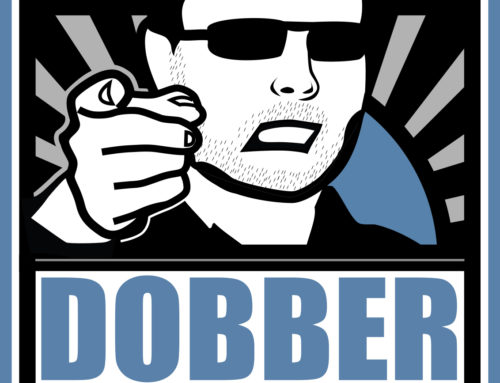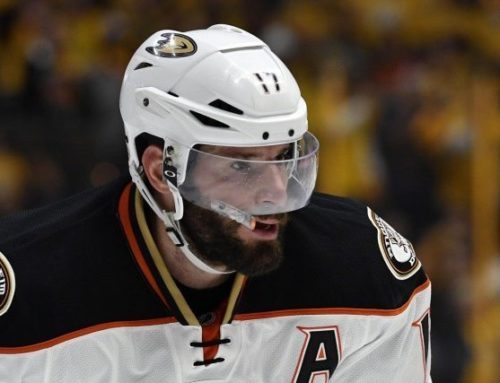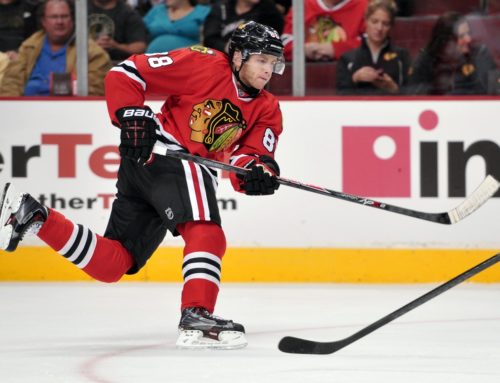What to Watch For: An Introduction Pt.I
Justin Goldman
2008-08-04

Part I of V
Each and every goalie that has ever played the professional game is a creature of habit. They all display feedback and provide you with information on whether or not he is either starting to struggle, currently struggling, will struggle in the future or is literally feeling “uncomfortable” with their current game. These signs or “tells” vary from certain body movements to post-play visual/verbal feedback, psychological traits and more.
Everyone knows that August is an important month in the formation of your fantasy hockey team. This is because players you happen to fancy will ultimately take a step forward or a step back in their development, depending on how hard they work and the chemistry they create with fellow teammates. For poolies, the focus is on finding the latest news about said player(s) and staying informed about their off-season progress.
For goaltenders trying to raise their stock and playing time, a considerable amount of focus can be employed on the ice in order to really boost their status much quicker than what most skaters are able to do. Goalies have private coaches that spend hours breaking down the most innate aspects of their game. Plus they are only up against their counterpart(s), so their ability to quickly jump from unknown AHLer to split-duty tandem can happen more suddenly than a short whisper in the night. The next thing you know, a goalie slated to be taken in the 9th or 10th round is being vaulted to the top five.
So since we are all so-called fantasy hockey gurus, our ultimate challenge is to analyze the goaltending situation for all 30 teams and understand who has the upper hand, more potential and what the coaching staff currently has in mind as far as the workload is concerned. Once you are able to get a clear idea of which goalie fits in where, it’s time to break down their game and try to get the inside track on their progress. Now your choices will not only be informed, but guessing what their future holds won’t be such a murky, chaotic experience.
So for the next five weeks you will get even more insight on how I break down a goalie’s current progress in order to help enable yourself to not only see the many different layers of goalie philosophy, but also to peel them back and decipher what you see. It takes a very powerful microscope so to speak to do this, but everyone has the magnifying strength if they just focus and learn about the position’s progress since 2004.
How do you know if a goalie is battling the puck? What are the signs that a goalie is losing confidence or struggling to gain support from his teammates? Which goalies are head cases and cause more problems on and off the ice than they solve? Which goalie is following the same path of those such as Pascal Leclaire, Evgeni Nabokov and Henrik Lundqvist? Which up-and-comers are destined for success this season and which ones are currently digging a deeper grave?
These are the questions you’ll be able to answer for yourself by the time September gets here and 30 training camps prepare to open around North America. It’s time to become a real goalie guru and get the inside track on becoming the Nostradamus of goaltending. Believe me when I say that you can extract an incredible amount of information from literally watching a goalie in a scrimmage, practice or on-ice workout for no more than a few minutes. All it takes is an understanding of Situational Awareness…oh and feel free to employ it in your everyday fantasy hockey decisions as well. This is not just a futile lesson on fantasy hockey goaltending, it’s a lesson you can truly use in life.
For those of you that remember a column I wrote on Situational Awareness last season, you’re already ahead of the game. For those that didn’t, please take a few moments to read it so you can follow along with the rest of the class. Situational Awareness is a term never used before in the realm of professional goaltending but I guarantee that if you were to ask any goalie or coach what kind of importance this term has, they will answer with responses like vital, necessary and essential.
Situational Awareness – in its most basic form – means recognition and understanding. When a goalie sees a play develop in front of him, there is always a period of time – lasting maybe two or three seconds – where he can analyze the oncoming game situation and adjust his movements accordingly to handle it successfully. Whether it’s a 3-on-2, a 2-on-1 or a full-fledged breakaway, goalies are forced to comprehend the sudden attack and fight back with brutal quickness and swift decision making. This is what Situational Awareness is all about. And suddenly goaltending is more about mental focus, game intelligence and understanding then it is about foot speed or how quick a glove hand is.
What you already know is this: goalies with a strong mental focus and a great understanding for the game will ultimately be more successful because he is able to read plays and react efficiently, without much thought or effort. This is why a goalie’s game doesn’t truly mature until close to their 30’s. Most of today’s NHL goalies may have amazing technical skills, but their ability to comprehend the game doesn’t truly advance unless they experience tons and tons of elite, intense (and often playoff) hockey.
That would explain the veteran leadership of goalies like Martin Brodeur, Chris Osgood, Nikolai Khabibulin and all the other 30+ goalies in the league. Their experience allows them to stay competitive, even if they aren’t the quickest, biggest or fastest, because their experience and their Situational Awareness is bar none. They see a play develop and they automatically know how to handle it…their prior history of facing these types of plays (and players) lends a hand to their success.
Now that you have a very solid introduction to this series, be sure to read over the Situational Awareness column as we prepare to learn how to read a goalie’s body language during practice and in games and analyze what you see in order to predict what could come next. A very large part of how a goalie will play his NEXT game depends on how he played his LAST game. Momentum, both emotionally and physically, is that airy aspect of goaltending that doesn’t exist on paper, but can still be successfully calculated after analyzing body language.
*Please feel free to ask questions regarding this series or this installment in the School of Block forum!





 BUF
BUF N.J
N.J PHI
PHI MIN
MIN VAN
VAN FLA
FLA TOR
TOR CGY
CGY ANA
ANA